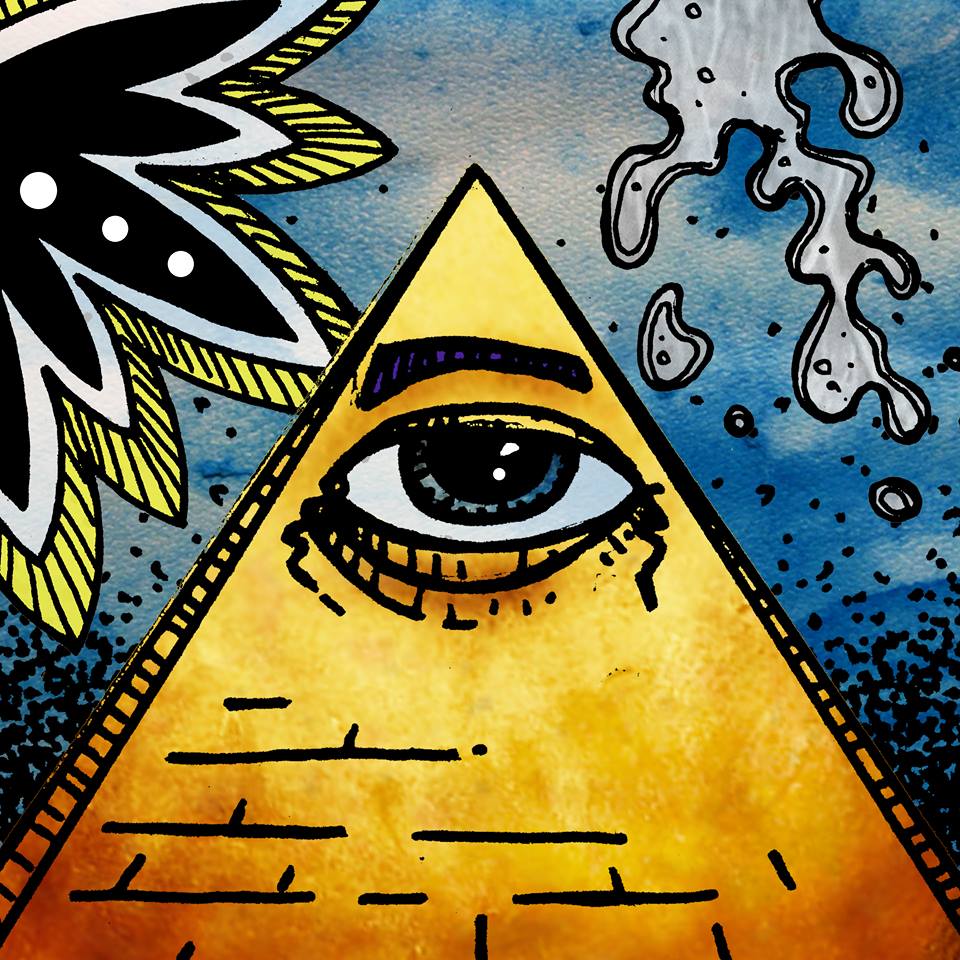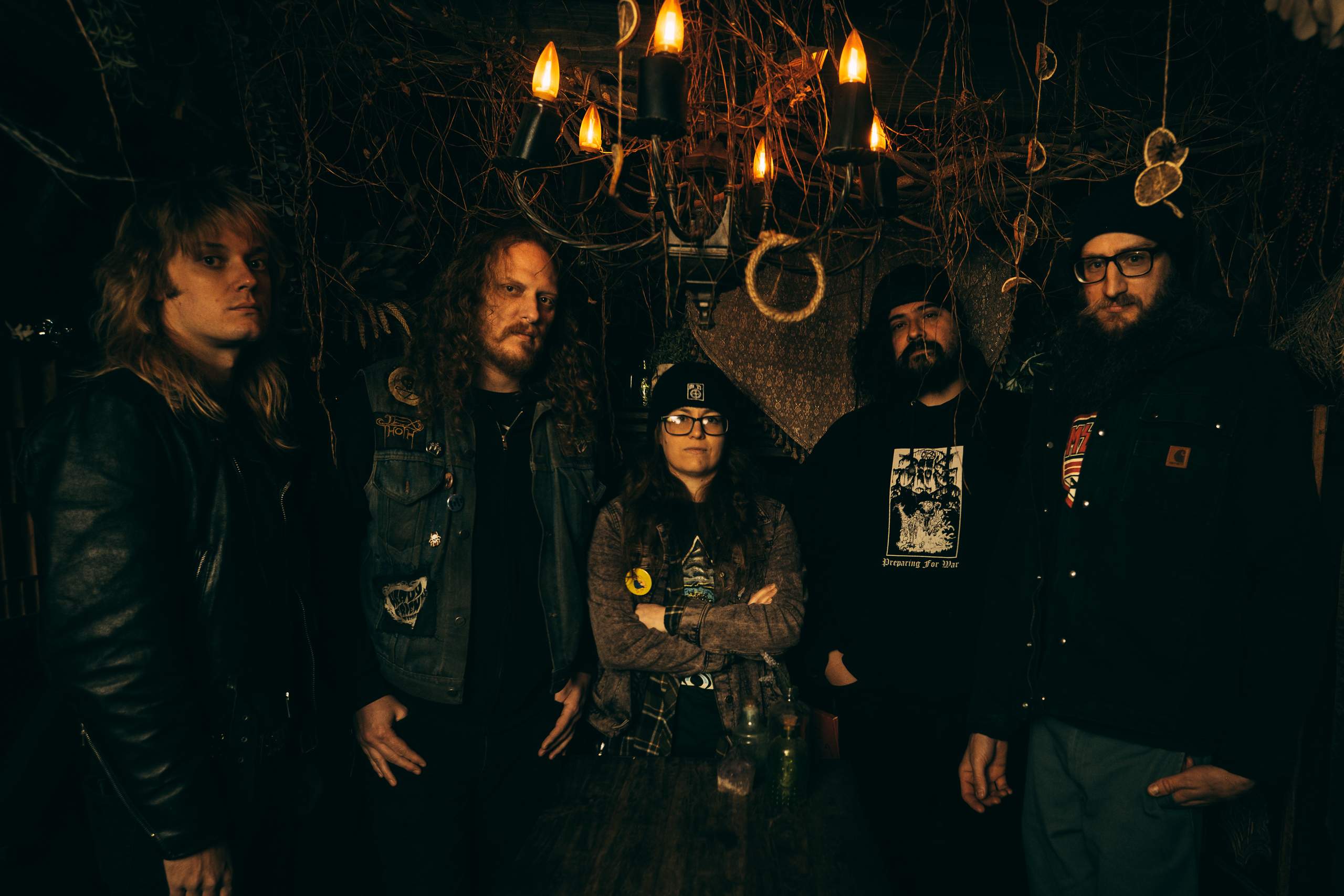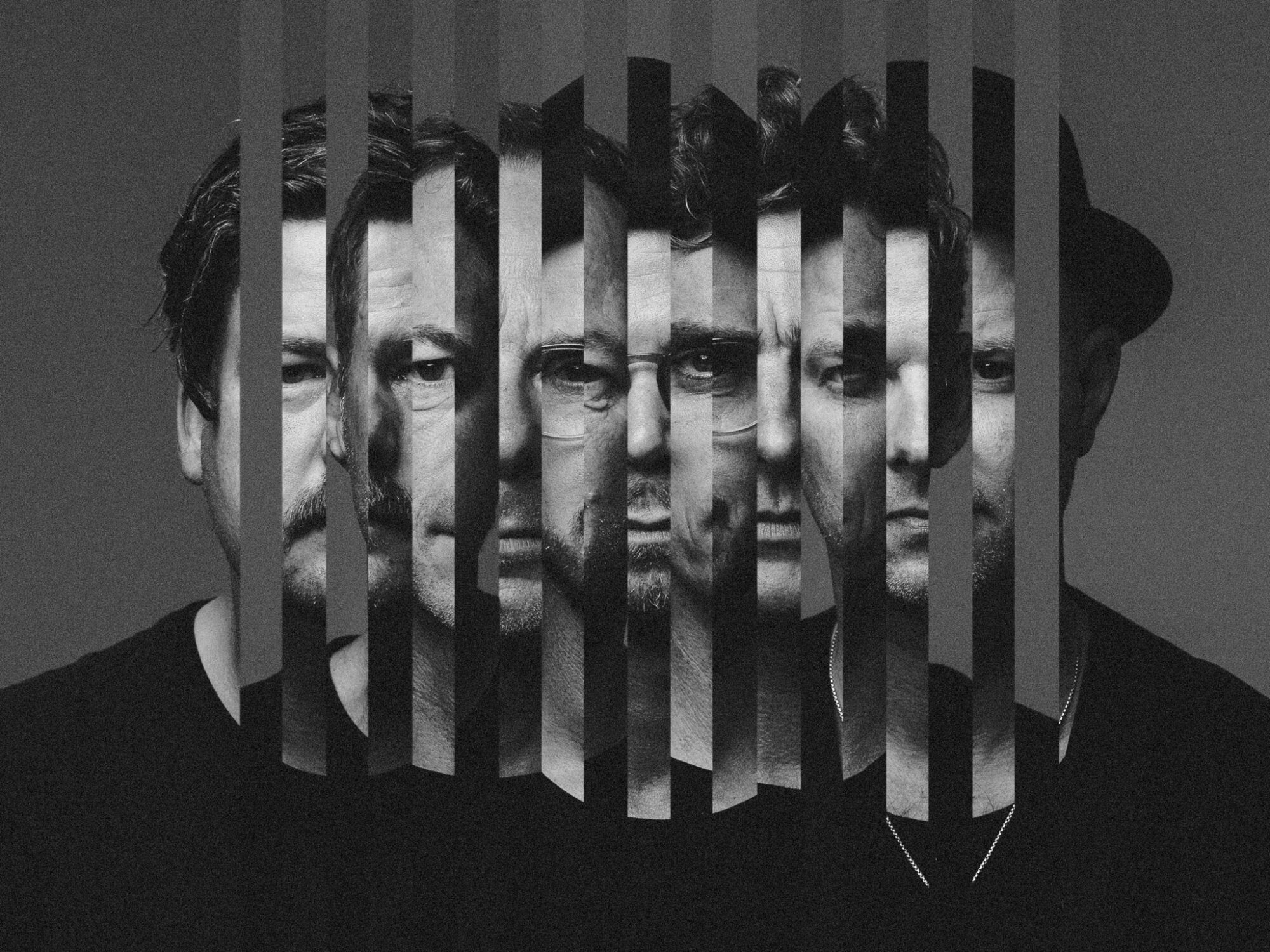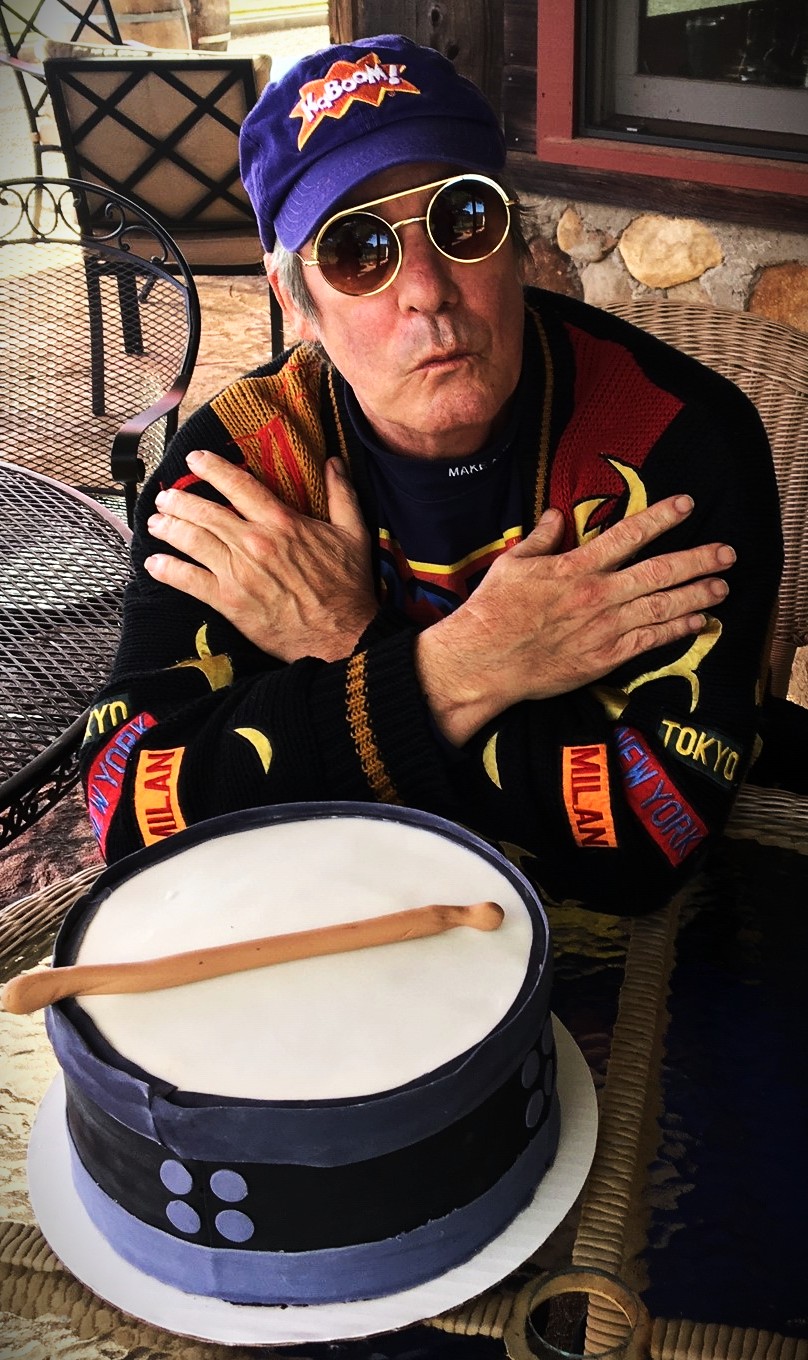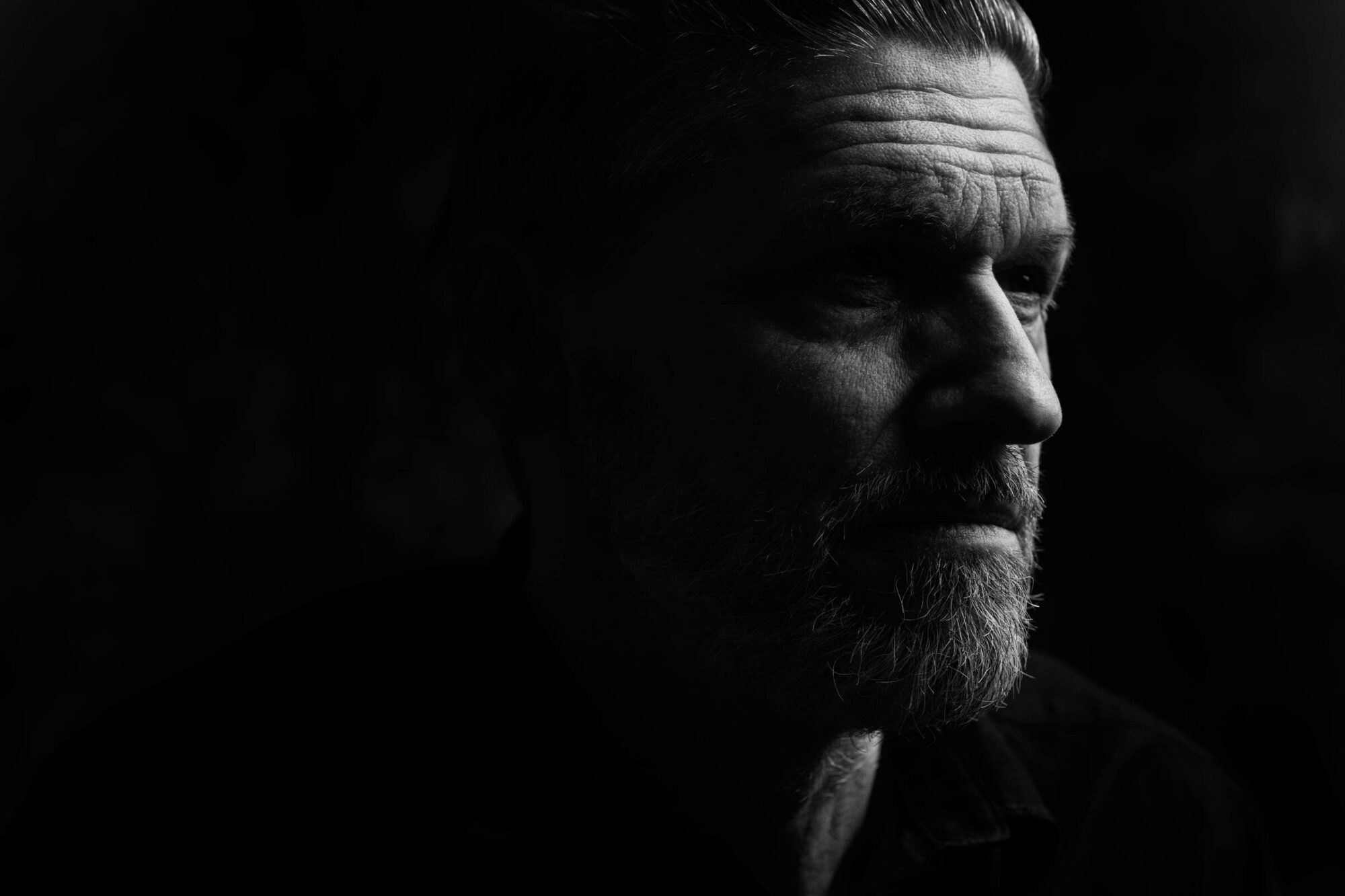Slumbering Sun on ‘Starmony’: An Interview with Doom’s Crazy Romantics
Slumbering Sun’s new album ‘Starmony’ comes out May 9, and it’s a big, emotional, heavy-hitting step forward for the band.
If their debut ‘The Ever-Living Fire’ was about introducing their dreamy, melodic take on doom, this one feels more confident, more expansive, and even more personal. The songs stretch out and breathe, blending crushing riffs with soft, folky undercurrents and shoegaze textures. It’s doom, but not the kind that just wallows. There’s heartbreak, beauty, and even a little hope in there.
It’s slow and heavy, but there’s something delicate about it too. The vocals are full of feeling without going over the top, and the whole thing moves like a wave, pulling you in deeper with every minute. It’s the kind of an album that makes you want to close your eyes and just sit with it for a while.
Slumbering Sun is made up of musicians from Monte Luna, Temptress, and Destroyer of Light, all longtime friends in the Texas metal scene. Keegan Kjeldsen, James Clarke, Kelsey Wilson, Garth Condit, and Kelly “Penny” Turner first came together in 2022 with the idea of making something new, something that blended their love for doom with shoegaze, grunge, folk, and a touch of prog.
In 2024, they kept up the momentum with Midwest shows and the release of ‘Out of the Blue & Into the Void,’ a wild, brilliant mashup of Neil Young and Black Sabbath. ‘Starmony’ is the result of all that experience and energy. It feels as thoughtful as it is heavy, and shows that this band isn’t just here to crush. They’re here to connect.
The album will be available on limited edition LP and digital formats on May 9. Preorders are up now.
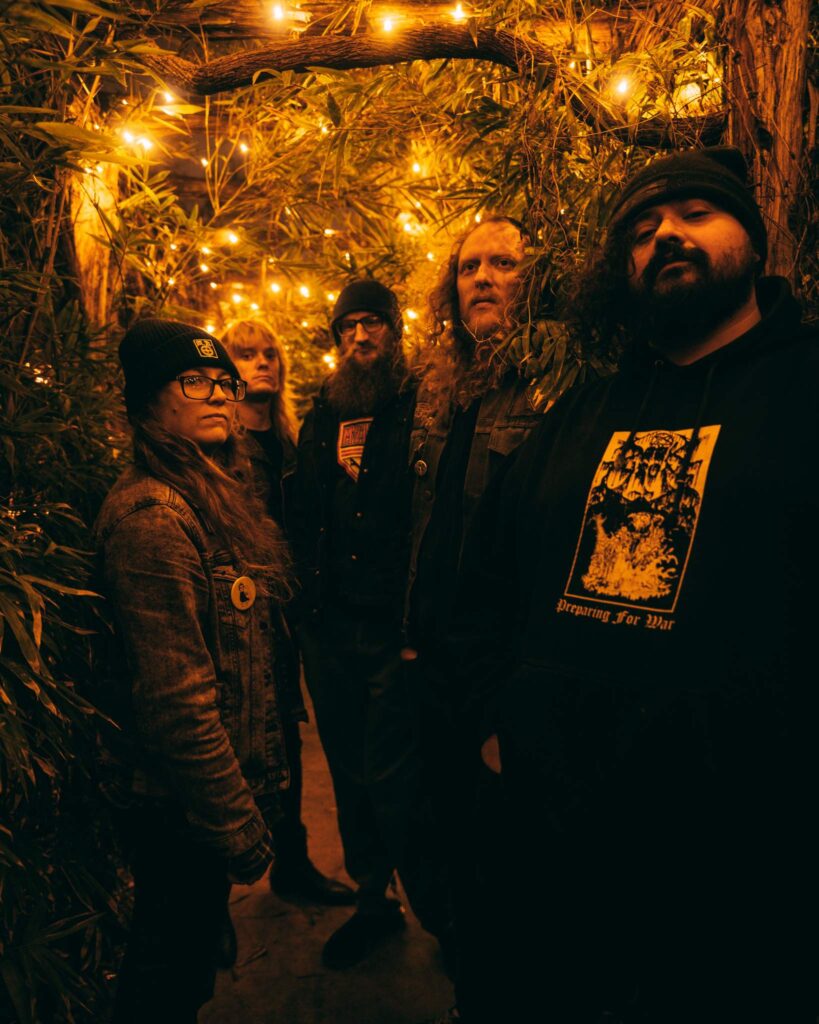
“We’re trying to go back to the emotional core of the genre, and talk about what’s real.”
‘Starmony’ is such a killer name, kinda sounds like something cosmic and weird but also like, super heartfelt. Where did that come from? Did the album grow into that vibe, or did the word shape the direction from the start?
We didn’t have a title when we went into the recording studio. We spent the better part of a year doing additional tracking and post-production, still without a name for the album—until we reached the mastering process, when the tracks had to be encoded with a title. In other words, we were forced to come to a decision. The inspiration came from the centrality of both vocal harmonies and guitar harmonies in the songwriting, much more so than on the first album. We also knew from the beginning that we wanted to continue the solar theme of the first album that will always be part of the band’s identity. If a harmony is a convergence of two voices, then Starmony is the convergence of two stars. In spite of whatever people may say about puns, we think they’re awesome.
All your other bands bring the heavy in different ways, but this one feels… softer? Not less heavy, but like there’s more space. Was that the plan going in, or did it just sorta happen once you all started jamming?
That was the plan from the beginning of the band. The first album was written before the band was assembled, and the material just didn’t focus on heaviness as one of the goals. We can be heavy, if the song calls for it. But I had already spent a dozen years in my previous band, Destroyer of Light, writing songs where the mindset is, “I’m going to crush everyone with this riff.” I can’t necessarily speak for the others, but I’m sure they feel the same way. Monte Luna was one of the heaviest bands in Austin for a long time—probably heavier than us in some ways. In Slumbering Sun, the doom riff is a color on our palette wheel, but it’s not the point we’re trying to make. And I would argue that doom didn’t really start out as a competition to be the heaviest band. I was really inspired by older, traditional doom bands like Warning and Reverend Bizarre, who instead structure their songwriting around melody and an emotional narrative.
You’ve got these massive, doomy riffs that suddenly melt into these dreamy shoegaze-y parts—it’s wild. How do you figure out where to lean in heavy and where to let things float a little more?
I start from some initial idea or inspiration and then let the idea dictate the process. Once I begin writing the song, the song starts to reveal itself—I start to perceive what the song is “supposed to be,” what part is “supposed to” come next after the one or two riffs you started out with. Then we have to figure out where the song is naturally ramping up in energy and where we need to quiet down and let the song take a breath. The intention from the beginning was to transition between those two vibes—big and fuzzy chords, versus soft, “starry” parts that seem to float. With some songs, like Wanderlust, I knew from the start that I wanted to write a folk song for the first half, that would transition into a traditional melodic doom song in the second half. At other times, when we were writing Together Forever or Danse Macabre, the natural rise and fall of the song dictated when we would get loud and when we would quiet down. Everyone knows that quote from Michelangelo: “I saw the angel in the marble and carved until I set him free.” I think he was describing what basically every artist does.
Would love it if you could share some further words about the recording process…
It took a long time and was a very different experience from the first album. We recorded ‘The Ever-Living Fire’ in three days and mixed it relatively quickly. For ‘Starmony,’ we took even more time for the initial sessions and still left with an unfinished recording. In the following months, James finished his vocals, Kelsey added her harmonies, and Charlie Anderson (Panopticon, Transit Method) recorded his violin parts. After the initial mixes, we found we weren’t happy with some of the parts from the initial recording and had to do some retracking. The post-production process—just like the songwriting—was more collaborative, and therefore more stressful. We were just more perfectionist about it. In addition to this, Garth and Kelsey were very busy with their other bands, with Kelsey touring the US in Temptress and Garth traveling all over the world in Enforcer. Our mixing engineer, Matt Meli, had also just moved back to Austin, and it made the process more drawn out for him as well. He sank a lot of hours into this project, and it’s the longest I’ve ever spent on post-production for an album. But, in retrospect, it was all necessary.
Y’all have been in each other’s orbit for a while…scene friends, old bands, all that. Does that history change how you play together now? Like, do things click quicker because you already know each other so well?
It is definitely easier to play music with someone that you’ve been performing with for a long time, but I wouldn’t say that knowing one another personally made it easier to get on the same wavelength as far as performance goes. For example, I’ve been friends with Penny for fifteen years or so, but what really counts is playing along to his drumming for fifteen years. Even though I knew Garth and Kelsey before we formed the band, I’d never played with them before, and I still had to get used to the way they play, figure out how they learn, and what their greatest strengths are. But the fact that the band was formed based on pre-existing friendships does make things easier as regards rehearsal, playing shows, and touring. Above all, keeping a band together is all about personality and relationships, regardless of how well you play together on stage.
There’s this really cool folky thread running through some of the melodies…almost Celtic at times. Is that something someone brought in on purpose, or did it sneak in through the back door while you weren’t looking?
It was absolutely intentional. The idea I had before Slumbering Sun, which was sort of the precursor to it, was to take a number of folk songs and turn them into doom songs: some Celtic standards like Siúil a Rúin and Are Ye Sleepin’, Maggie, and covers of harp compositions by Kim Robertson like New Leaves and Moonrise. These songs have simple melodies in a minor key. If you take the underlying chord progression of a Celtic folk song, slow it down, and play it through distortion, you have something pretty similar to melodic doom in the vein of Pallbearer. As a matter of fact, Pallbearer covered Gloomy Sunday on their first demo, which is not a folk song nor is it Celtic (it was written by Hungarian composer Rezső Seress and is most famous in the US for Billie Holiday’s jazz performance), but their method in adapting that cover is the same thing I was going for. Ultimately, after arranging these folk songs into doom songs for a couple of months, and thinking of getting a band together to record it, I figured it was a shame to do that just for some cover songs and wondered why I wouldn’t just write some original material in the same style. That was basically the story of the first album. On Starmony, that influence continues. It comes through most strongly on Wanderlust, but I think this original inspiration remains the guiding light of the project, so I’m glad you picked up on it.
“We want people to actually feel the feelings, not shut them off.”
Doom bands don’t usually name-check shoegaze or grunge as much as y’all do, and it really shows in the sound. Were there any left-field influences on this record that surprised even you?
The grunge influences came out of left field, for me anyway. I would say that this was mainly James’ contribution to the band. There is a lot of Layne Staley and Mike Patton in his vocals, which is not a direction I’d ever thought about when conceiving the band, but it completely fits with the vibe. Alice in Chains, in particular, is beloved by pretty much every fan of doom metal that I know, because their subject matter is “doomy” in some ways—a combination of sadness and anger—and Jerry Cantrell also wrote some very heavy riffs. In a way, it’s surprising to me that more people don’t incorporate those kinds of influences. And now, the grunge influence has started to pull the songwriting in that direction. The chorus in ‘Midsommar Night’s Dream’ was definitely inspired by grunge. On the other hand, shoegaze feels quite natural to pair with doom, in my opinion. Messa is quickly becoming one of the most popular bands in the genre, and while I don’t think they would describe themselves as shoegaze, I think what people want out of doom right now is experimentation, incorporation of melody and ambience—a whole soundscape. For myself at least, I’m tired of the variations on Black Sabbath.
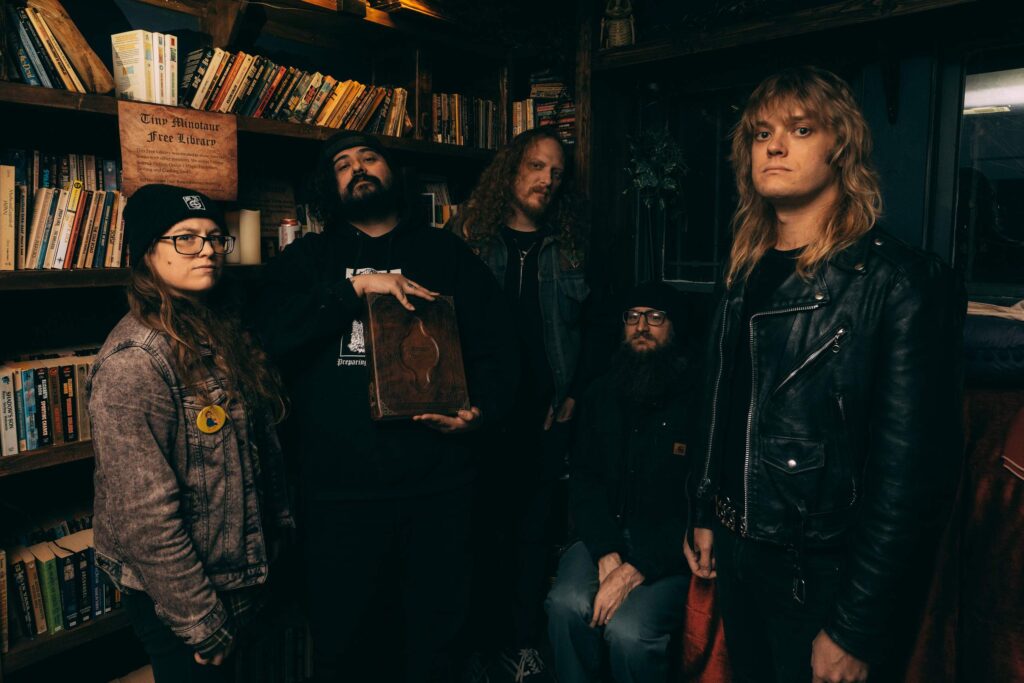
You’ve called this “music for crazy romantics,” which I love. Doom usually leans into the bleak, but this feels more about heartbreak than just plain misery. What’s your relationship with emotion in heavy music? Like… are you trying to make us cry and bang our heads?
It’s funny, because I just said I’m tired of Sabbath worship, but I think our subject matter just brings us back to the traditional roots of doom, which begins with Sabbath and the blues. The blues has always had heartbreak as one of its main themes, because it was a down-to-earth genre created by working people, and heartbreak is one of those struggles that is common to everyone—that we all have to confront at some point in our lives. Over the years, doom branched out from this emotional core and took on other meanings. Fantasizing about dragons and wizards can be a well-needed escape, wallowing in misery can be cathartic, and there’s even something about nihilistic misanthropy that is fun—but we will leave all that to other bands. Yeah, Sabbath talked about wizards and the devil, but the last song on their first record, ‘Warning,’ is basically a blues song. It’s about pursuing someone even when you know it’s a bad idea. The band ‘Warning,’ who is named for this song, then wrote one of the classic albums of the genre, ‘Watching from a Distance,’ which is entirely about a break-up. I think doom is at its best when it confronts those universal struggles that speak to people in a very personal way. Yes, we can get into existential dread, but not in the Electric Wizard, “life has no meaning, my feelings are numb” kind of way. One of the songs on ‘Starmony,’ ‘Danse Macabre,’ involves an existential struggle with spirituality; ‘The Tower’ is about existential fears over the future. But we want people to actually feel the feelings, not shut them off. We’re trying to go back to the emotional core of the genre, and talk about what’s real. And as ‘Earl of Void’ (Reverend Bizarre) said, real life is not all doom and gloom. Confronting sadness can be brutal, but it’s also a necessary part of growth. So there is an element of hope in our music as well.
Klemen Breznikar
Slumbering Sun Facebook / Instagram / Bandcamp
